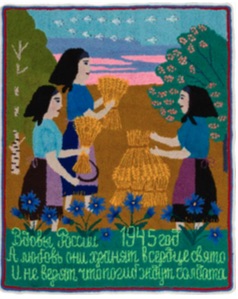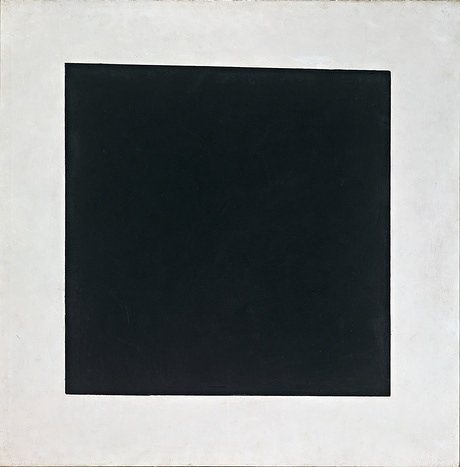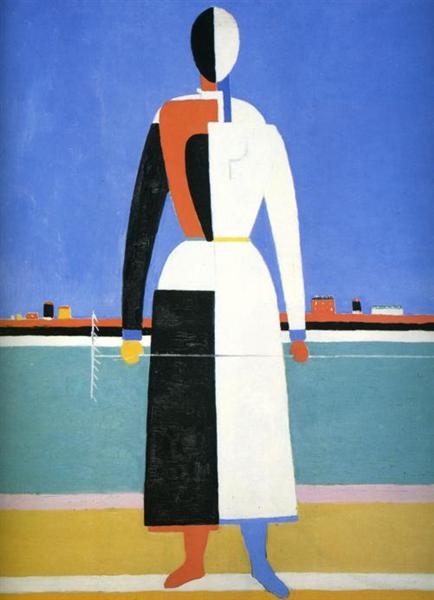
Imagine it’s early January 2019 and you are walking the back streets of Marylebone, wrapped up against the chill of the winter air. Chances are you will find yourself turning into Chiltern Street, a street full of character and red-bricked buildings. Full of specialist shops, Chiltern Street was voted “London’s Coolest Street” by the magazine Condé Nast Traveler due to its timeless quality and historical atmosphere.
Despite the selection of premium niche retailers, your eyes are instantly drawn to a small bright red shop front with a bold sign that boasts “Barber Shop”. Complete with a bench against the front window, and striped barber’s pole, it almost feels as though you have travelled back in time, however, if you wanted to get your hair cut, you are about to be disappointed.
The old barber shop is now the location of The Gallery of Everything, opened in 2009 by curator director James Brett. The gallery belongs to the critically acclaimed touring installation The Museum of Everything founded the same year, which is the leading advocate for non-academic and private art-making, collaborating with a whole host of contemporary artists, curators, writers and institutions. The gallery is the museum’s personal space to display works by masters and newly discovered creators of all backgrounds.
“Our aim is to challenge institutions which, often unintentionally, deny wall-space to people of colour, vulnerable adults, untrained artists and other so-called minorities. Look at many of the most important museums in the world, from the Whitney to Tate Modern, you will find their definitions of art are much narrower and more restrictive than you imagine. What we lobby for is not simply equality, but change. We are not here to read art history, we are here to write it.”
Walking past the gallery during the first weeks of the year, you would have seen a brightly coloured tapestry featuring images of people and writing in Russian. This was just one of many contemporary tapestries created by the octogenarian Olga Frantskevich that featured in an exhibition titled Of a Life/Time, which ran between 25th November 2018 and 27th January 2019. Using her artwork as a discourse of memory, this was Frantskevich’s first exhibition outside of the eastern bloc.
Frantskevich has sewn all her life and recalls being taught by her grandmother at an early age. Sewing gave Frantskevich a creative outlet at a time that paper was not readily available and, therefore, drawing out of the question. Whilst working on a farm to earn some money to help support her mother and younger siblings, Frantskevich would practice her embroidery on pieces of sackcloth she found discarded about the place.

Swans
Although the majority of Frantskevich’s tapestries have been produced within the last decade, they recall her personal life and memories of a childhood traumatised by war. Born in 1937 in Vitebsk in northeast Belarus, a country that was ruled by the USSR throughout the twentieth century until receiving independence in the 1990s, Olga Frantskevich was a child of war living under German occupation during WWII until she was seven years old. Her embroidered autobiography summarises the things she and her neighbours went through, including being challenged by soldiers, losing loved ones, celebrating their freedom and welcoming home the war heroes.
Occupation of Belarus (or Byelorussia as it was then called) began on 22nd of June 1941 with the invasion of the Soviet Union by German troops. At the time, Frantskevich was four years old and the occupation would not end until she was seven. During the war, the Nazis destroyed over 5,295 Belarusian settlements, in the process killing most, if not all, the inhabitants. Some towns and cities were deliberately attacked and burnt down, whereas others were bombed by planes flying overhead, just like many areas throughout Europe. A number of villages, for instance, Khatyn in central Belarus, were massacred by police battalions, resulting in the death of all 156 inhabitants. Although German occupation only lasted for three years, it is believed an estimated 2,230,000 people were killed in total.
Frantskevich embroidered her memory of bomb attacks in one of her tapestries. Women and children can be seen fleeing from burning buildings, their arms raised in panic whilst forbidding, grey aeroplanes fly overhead. Since the majority of men were in the army, women were left to fend for themselves during these attacks, often finding themselves homeless after their houses had been destroyed. They could not even find shelter in nearby forests due to soldiers and attack dogs patrolling the area.
During the early days of the German occupation, a resistance Soviet partisan movement began, engaging in guerilla warfare against the invaders. They used the woods and swamps as places to hide and plan their next attacks, hence Nazi soldiers began to keep a close eye on the Belarussian woodlands, as shown in a couple of Frantskevich’s tapestries. The partisans were responsible for the heavy damage to German supply lines and communications. They disrupted railways and bridges, intercepted telegrams and attacked depots in order to block or hinder the enemy. On occasion, the partisans ambushed and captured Axis soldiers (Germans, Italians and Japanese). Due to the amount of sabotage, the Germans ended up withdrawing many of their forces from the front line.
- Keep Still, My Darling
- The Final Offensive
- 300 Grams of Bread
Many of Frantskevich’s memories of the war period are actually recollections of stories told by her aunt who was a nurse during the war. Frantskevich dedicated her piece called The Final Offensive to her aunt – her mother’s sister – Olga Yakovlevna Ginko, and her uncle Nikolai Dmitrievich. Frantskevich’s uncle was a soldier during the war, however, he was wounded in battle. As a result, he lost the use of one of his hands and could no longer serve in the army. Nonetheless, he continued to fight for his country by assisting the partisans for the remainder of the war.
Frantskevich’s aunt spoke of the wounded soldiers, those who lost their limbs, those she nursed and those she could not save. She spoke of things she saw, things no one should ever witness, and Frantskevich, many decades later, translated them onto tapestry. With precise embroidery, the horrors of war are vividly shown, complete with bloodstains and flames. Although Frantskevich never witnessed the combat first hand, her aunt’s haunting tales have stayed with her all her life.
What Frantskevich experienced herself was the poverty and hunger of the people left behind while their husbands, fathers, sons and brothers were out fighting. At this time in history, women were not seen as equal to men and had not been allowed certain “male” careers. The war, however, took many men away from their jobs and women had to fill their places.
Frantskevich captions one of her works with “My mother was given 300 grams of bread for all the work that she did.” Under the Nazi regime, some workers were paid with food rather than money, however, the amount was paltry. Three-hundred grams of bread does not last long, particularly in large families, and who knew how long it would be until the next payment?
- Widows of Russia
- Widows of Russia
- Widows of Russia
A number of Frantskevich’s tapestries set in 1945 are titled Widows of Russia and focus on women whose husbands have been killed or are missing. Rather than showing a group of weeping ladies, Frantskevich reveals the determination these people had to keep going. One image shows women working hard in a field doing the work their husbands once did. The caption reads, “With love in their hearts, the faithful wait. Perhaps their husbands are alive, perhaps one day they will come home.” The one-line heartbreaking story, however, that accompanies the piece indicates, “It is already autumn, still they wait.”
Another tapestry shows the widows cooking potatoes in a pot over a fire. Whether this in some way indicates their financial or home situation is unknown, however, the most important part is the embroidered text at the bottom of the 142 cm length of cloth: “They hide love in their hearts. Their silent song is weeping.” A different tapestry, featuring the women seated around a table spread of potatoes and bread has a similar caption: “They keep love hidden in their hearts, but their songs are not silent, they are weeping.”
The widows shown in Frantskevich’s work have united in their grief. They may have lost a husband but they still have each other. Life must continue, upon which these women are endeavouring to focus. Frantskevich was obviously too young to have a husband, however, she did lose her father in the war, so she understood the feeling of grief.
- Hello, Mamma!
- The Champions
- The Hero
- Victory Day
- The Hero Returns
Victory Day occurred on 9th May 1945 beginning with the Soviet Union following the signing of the German Instrument of Surrender in the early hours of the morning. Since Belarus gained independence from the USSR in 1991, the 9th May has become a non-working day with a ceremony on Victory Square in Minsk to commemorate the ending on the war. In Frantskevich’s tapestry The Hero, she shows their village accordion player, Leonid, still in uniform, delivering the news that the war had been won. A similar piece, Victory Day, contains two fictional people who represent that “when they heard that the war was over, people met and sang and cried with joy.”
The joy people felt can be seen in The Champions in which three soldiers are dancing in celebration. This particular scene represents the liberation of the burnt-out village of Sarya after the soldiers had cleared the area of mines, making it safe for the villagers to return home – or, at least, what remained of home. The middle soldier wears a women’s headscarf, although he is clearly a man. The silly behaviour emphasises the happiness of the soldiers who then invited the village-folk to share a meal and celebrate together.
The end of the war meant the return of loved ones, those who had survived the fighting and lived to tell the tale. Hello, Mamma! shows a returning son greeting his mother much to her delight. It may have been months, even years since they had last seen each other and they have been reunited at last. Scenes like this were common all over the world as the soldiers gradually made their way home to their families. Life, however, could not return to the way things were before. Places had changed, people had changed and the echoes of war were not easily eradicated.
Although most men returned to their day jobs, others were in no physical and mental shape to be able to do so. The Hero Returns shows the fate of one of the soldiers who, despite being lucky to survive, has returned home an amputee. He can no longer work on the farm as he once did, therefore, the women who took on the jobs of men during the war were required to continue.
- Among the Cornflowers
- May Day Celebration
For Frantskevich, her family life could not return to the way things were before the war. In the years after Victory Day, she remembers visiting the Tomb of the Unknown Soldier where she laid down flowers in memory of her father who had no grave of his own.
Nonetheless, Frantskevich’s post-war childhood was not all doom and gloom. One tapestry shows a scene from 1951 when she was in the seventh grade at school. Apparently, there were only nine children in her class, however, that did not stop them from joining in state celebrations, such as May Day on the first of the month. Frantskevich remembers designing the posters for the school, state farm and rallies with slogans, such as, “We celebrate May Day.”
- I Love You
- I Love You
- Autumn
Not all of Frantskevich’s embroidery shown at The Gallery of Everything was about the war. A few small pieces were intended for pillow or cushion cases, such as Autumn with birds and rowan-berries that are frequently seen in Belarus at that time of year. Two other cases feature two pigs and are both titled I Love You. Whether the animals represent specific people is unknown but the idea is clear. In one, the pigs express their love for each other by sharing gifts of vegetables. In the other, they display the same sentiment by giving flowers.
The display of Olga Frantskevich’s work at The Gallery of Everything unfortunately finished at the end of January, however, her work is held in several museums in Russia, including Muzey Balashikhskiy and the Muzey Russkogo Lubka i Naivnogo Iskusstva. Although the style of her tapestries may not appeal to all, it is amazing how easily she captures her memories and history of the war in the former USSR. History books tend to focus on the facts, usually directed at those who played significant parts in the making of history. Frantskevich, however, gives the lesser known perspective of the common people, those who were oppressed by the Germans; lost their homes and their fathers and husbands; those whose lives were changed forever.
Another factor that makes Frantskevich’s work so remarkable is that it is all hand-woven, a time-consuming task that is even more extraordinary for someone in their eighties. Where some artists may sketch their memories, Frantskevich embroiders hers instead, resulting in some bright, precise designs that perfectly portray the thoughts, pictures and memories in her head. Thanks to The Gallery of Everything, the people of London were able to experience and admire these phenomenal works.
The Gallery of Everything is open from Wednesday to Saturday from 11am until 6:30pm. It is also open on Sundays at 2pm until 6pm. A number of exhibitions run throughout the year, details of which can be found on their website: www.gallevery.com
My blogs are now available to listen to as podcasts on the following platforms: Anchor, Breaker, Google Podcasts, Pocket Casts and Spotify.
If you would like to support my blog, become a Patreon from £5p/m or “buy me a coffee” for £3. Thank You!






















